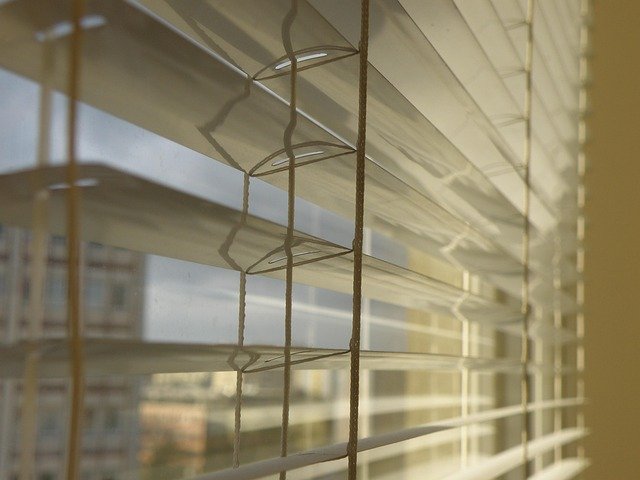Blinds for Homes and Offices: comfort and modern solutions
Window treatments have evolved significantly over the years, transitioning from simple coverings to sophisticated design elements that enhance functionality and aesthetics. Among these, blinds stand out as versatile solutions for both residential and commercial spaces. They offer practical benefits while complementing interior design, making them essential components in modern architecture and interior decorating. Whether for a cozy home or a professional office environment, blinds provide customizable options that address specific needs while adding visual appeal.

Why Blinds Are Essential for Light Control, Privacy, and Thermal Insulation
Window blinds serve multiple critical functions that make them indispensable in any space. First and foremost, they offer precise control over natural light penetration. Unlike curtains, blinds can be adjusted to filter varying amounts of sunlight, from complete darkness to gentle diffused illumination. This adjustability helps prevent glare on screens and protects furniture and flooring from UV damage.
Privacy remains a primary concern for both homeowners and businesses. Blinds create instant seclusion when needed while maintaining the option for openness and connection to outdoor views. The ability to control visibility from outside looking in provides peace of mind without sacrificing natural light entirely.
Perhaps less obvious but equally important is the role blinds play in thermal insulation. Quality blinds create an additional barrier between indoor spaces and window surfaces, helping maintain consistent interior temperatures. During summer months, they block solar heat gain, reducing cooling costs. In winter, they provide an extra layer of insulation that prevents heat loss through windows. This energy efficiency translates to noticeable savings on utility bills year-round.
Popular Models: Vertical Blinds for Offices, Roller Blinds for Apartments, Venetian for Universal Use
Different environments benefit from specific types of blinds designed to meet their particular requirements. Vertical blinds have become synonymous with professional settings due to their practical advantages. These blinds feature long slats that hang vertically from a track, making them ideal for covering large windows and sliding doors common in office buildings. Their design allows for easy operation and minimal dust accumulation compared to horizontal alternatives. The clean lines of vertical blinds complement corporate aesthetics while providing necessary light control during presentations and meetings.
Roller blinds have gained popularity in residential settings, especially apartments, thanks to their streamlined appearance and space-saving design. These blinds consist of a single piece of fabric that rolls around a tube, offering simplicity and modern elegance. Available in various opacity levels from sheer to blackout, they adapt to different rooms and purposes within a home. Their minimal profile makes them particularly suitable for smaller spaces where bulkier window treatments might appear overwhelming.
Venetian blinds remain the most versatile option, finding applications in virtually any setting. Featuring horizontal slats that can be tilted to control light and privacy precisely, they offer unmatched functionality. Available in materials ranging from aluminum and vinyl to wood and faux wood, Venetian blinds complement any décor style from traditional to contemporary. Their adaptability makes them appropriate for both residential and commercial applications, explaining their enduring popularity across various contexts.
Where Demand Is High: Households, Commercial Spaces, Hotels, and Restaurants
The demand for quality blinds spans multiple sectors, each with distinct requirements. Residential settings value blinds that balance functionality with design aesthetics. Homeowners increasingly seek window treatments that complement their interior décor while providing practical benefits. Bedrooms typically require blackout options for better sleep quality, while living areas benefit from light-filtering solutions that maintain views while reducing glare.
Commercial environments prioritize durability, low maintenance, and professional appearance. Open office layouts particularly benefit from glare-reducing blinds that create comfortable workspaces without sacrificing natural light. Conference rooms and executive offices often feature automated systems that adjust throughout the day for optimal lighting conditions during different activities.
The hospitality industry represents another significant market for specialized blind solutions. Hotels require blackout blinds that ensure guest comfort and privacy while maintaining design standards that reflect their brand aesthetic. Restaurants utilize blinds to create ambiance and manage shifting lighting needs from daytime to evening service. Both sectors benefit from commercial-grade materials that withstand frequent use while maintaining their appearance.
Key Advantages: Long-Lasting, Easy Care, Cost-Effective
Modern blinds offer several compelling advantages that explain their widespread adoption. Durability stands among their most significant benefits, with quality blinds often lasting 7-10 years or more with proper care. Materials like aluminum, composite wood, and high-performance fabrics resist warping, fading, and deterioration even in challenging environments with high humidity or temperature fluctuations.
Maintenance requirements for most blind varieties remain minimal compared to fabric curtains or drapes. Many blind materials resist dust accumulation or can be quickly cleaned with simple wiping or vacuuming. This easy-care nature proves particularly valuable in commercial settings where regular deep cleaning would otherwise represent a significant operational expense.
The cost-effectiveness of blinds derives from their combination of reasonable initial investment and long-term durability. While premium custom options exist, many standard-sized blinds remain accessible at various price points to suit different budgets.
Real-World Cost Insights for Different Blind Options
The price range for blinds varies considerably based on materials, size, customization, and installation requirements. Understanding these variations helps consumers make informed decisions based on their specific needs and budget constraints.
| Blind Type | Average Price Range (Standard Window) | Materials Available | Lifespan |
|---|---|---|---|
| Roller Blinds | $35-$180 | Polyester, Cotton, Linen, PVC | 5-7 years |
| Vertical Blinds | $40-$200 | PVC, Fabric, Aluminum | 5-8 years |
| Venetian Blinds | $25-$400 | Aluminum, Wood, Faux Wood | 7-10 years |
| Roman Blinds | $70-$350 | Various Fabrics | 4-7 years |
| Motorized Blinds | $150-$500+ | Various | 8-12 years |
Prices, rates, or cost estimates mentioned in this article are based on the latest available information but may change over time. Independent research is advised before making financial decisions.
Future Trends: Integration with Smart Home Systems, Sustainable Fabrics
The evolution of blinds continues with emerging technologies and environmental considerations shaping future developments. Smart home integration represents perhaps the most significant advancement in recent years. Motorized blinds now connect to home automation systems, allowing scheduling, remote control via smartphone apps, and even voice command operation through virtual assistants. Some advanced systems include light sensors that automatically adjust blinds throughout the day to optimize energy efficiency without manual intervention.
Sustainability increasingly influences both manufacturing processes and material choices. Eco-friendly options include blinds made from recycled materials, sustainably harvested wood, and fabrics produced with reduced environmental impact. Manufacturers have responded to consumer demand by developing PVC-free alternatives and water-based finishes that minimize chemical off-gassing. Energy efficiency remains another sustainability focus, with honeycomb or cellular blinds specifically designed to improve insulation properties.
The future of blinds will likely see further convergence between technological advancement and environmental responsibility, creating products that offer enhanced functionality while reducing ecological footprint. As these innovations become more accessible, they will continue transforming how we enhance comfort and functionality in both homes and offices.




